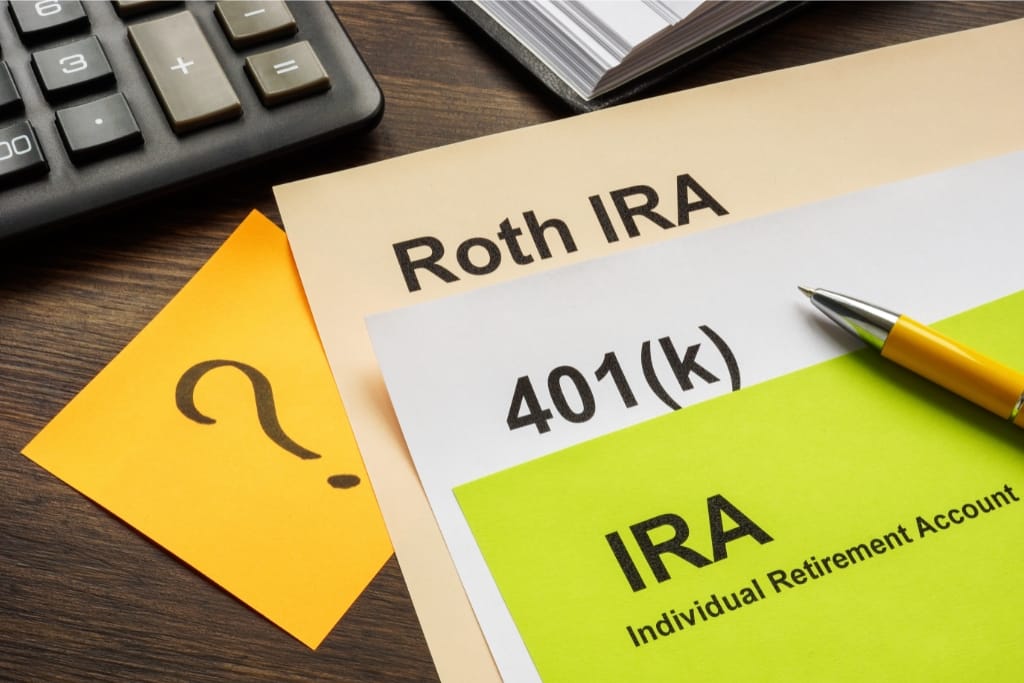Planning for retirement is a crucial step in anyone's financial journey, and understanding the various investment options is key to building a robust plan.
One such investment vehicle that often attracts attention is the Roth IRA.
Despite its popularity, many myths surround Roth IRAs, often misleading new investors.
By shedding light on these misconceptions, you can make informed decisions that profoundly impact your financial future.
Join us as we debunk these myths and empower you with the knowledge needed to leverage Roth IRAs effectively.
1)) You Can't Contribute To A Roth IRA If You Earn Too Much
The idea that high earners cannot contribute to a Roth IRA is a common misconception.
While it's true that there are income limits set by the IRS that determine eligibility for direct contributions to a Roth IRA, those earning above these limits still have options.
One such strategy is the "backdoor" Roth IRA conversion, where individuals can contribute to a traditional IRA first, and then convert those funds to a Roth IRA.
This method allows high earners to enjoy the benefits of a Roth IRA, such as tax-free growth and withdrawals in retirement, even if their income surpasses the threshold.
Understanding the possibilities and nuances can ensure that you don't miss out on leveraging Roth IRAs for your long-term financial strategy.
2)) Roth IRAs Are Only For Young Investors
While Roth IRAs are often associated with young investors because of the tax-free advantages they offer in retirement, this investment vehicle is not exclusive to any age group.
Roth IRAs can be an excellent option for older investors as well. One of the key benefits for older investors is that Roth IRAs do not have required minimum distributions (RMDs), unlike traditional IRAs.
This feature allows funds to grow tax-free for a longer period, providing greater financial flexibility in managing retirement funds or planning an inheritance.
Those approaching retirement can leverage the Roth IRA's qualified withdrawals to manage their tax liabilities effectively.
With benefits that cater to investors of all ages, Roth IRAs present a viable opportunity to enhance retirement savings regardless of when one starts investing.
3)) You Can't Withdraw Contributions Tax-Free At Any Time
It's a pervasive myth that funds in a Roth IRA are entirely locked away until retirement.
In reality, Roth IRAs offer a unique advantage allowing investors to withdraw their contributions at any time without incurring taxes or penalties.
This feature arises because contributions to a Roth IRA are made with after-tax dollars, meaning the investor has already paid taxes on these funds.
However, it is crucial to differentiate between contributions and earnings within the account.
While contributions can be accessed tax-free, withdrawing earnings before the age of 59½ or before the account is five years old may result in taxes and penalties.
This flexibility makes Roth IRAs an attractive and versatile investment option, providing liquidity without compromising long-term retirement goals.
4)) Roth IRAs Have No Required Minimum Distributions
One of the most appealing features of Roth IRAs is their exemption from required minimum distributions (RMDs), which can significantly benefit retirees seeking greater control over their financial futures.
Unlike traditional IRAs, Roth IRAs allow you to continue accumulating tax-free growth without the obligation to withdraw funds at a certain age, providing a strategic advantage for long-term wealth planning.
This benefit is especially important for those who wish to leave a tax-free inheritance, as heirs can inherit Roth IRAs and continue reaping the benefits of tax-free distributions.
By eliminating the pressure to draw from the account at a specific age, Roth IRAs offer unparalleled flexibility, allowing individuals to tailor their retirement strategies to best suit their needs and preferences.
5)) Rolling Over A Traditional IRA To A Roth IRA Is Too Costly
While the process of rolling over a traditional IRA to a Roth IRA can involve paying taxes on the converted amount, it's a common myth that it is prohibitively costly.
The potential costs should be weighed against the long-term benefits of such a conversion, primarily the ability to enjoy tax-free growth and withdrawals during retirement.
By strategizing the timing of the rollover, such as converting during a year with lower income, retirees can manage and potentially minimize their tax liability.
This conversion also offers the advantage of eliminating future taxes on earnings within the Roth IRA, providing significant financial benefits over time.
Despite the immediate tax impact, the long-term tax savings and strategic opportunities make it a worthwhile consideration for many retirement plans.
6)) Roth IRAs Are Only Advantageous In Retirement
It's a common misconception that the benefits of Roth IRAs are limited solely to the retirement years.
While it's true they offer significant advantages such as tax-free growth and withdrawals during retirement, Roth IRAs can also be incredibly beneficial during an investor's working years.
For instance, the ability to withdraw contributions at any time without penalty provides a level of financial flexibility that can be a safety net for unexpected expenses or opportunities.
Furthermore, Roth IRAs can serve as an effective tool for long-term financial planning, offering tax diversification by balancing tax-free assets against taxable retirement income.
This diversification can lead to more effective tax-efficient withdrawal strategies throughout an investor's financial journey.
Therefore, Roth IRAs are a versatile investment option with benefits that extend well beyond retirement planning.
7)) You Can't Pass Down A Roth IRA To Heirs
The belief that Roth IRAs cannot be passed down to heirs is a significant misunderstanding of their capabilities.
Roth IRAs are an excellent tool for estate planning, as they allow for tax-free distributions to beneficiaries.
When a Roth IRA is bequeathed to heirs, the funds can continue to grow tax-free, thus extending the benefits of the original investment beyond the lifetime of the account holder.
Beneficiaries inherit a Roth IRA free from immediate taxation, providing them with a flexible financial asset that can accommodate various future financial needs, from college expenses to their retirement savings.
This appeal makes Roth IRAs a powerful legacy planning instrument, preserving wealth across generations while offering the continual advantage of tax-free gains.
Conclusion
In light of the numerous advantages that Roth IRAs offer, they stand out as a remarkably versatile and beneficial component of any robust financial strategy.
The ability to enjoy tax-free growth and withdrawals, combined with features like unrestricted access to contributions and exemption from required minimum distributions, makes them an attractive option for both retirement planning and estate planning.
The potential for converting traditional IRAs, although requiring initial tax considerations, can lead to significant financial benefits over time.
By debunking common misconceptions and understanding the strategic advantages of Roth IRAs, individuals can effectively bolster their financial security and provide a lasting legacy for future generations.
This financial tool serves not only as a retirement saver but as a flexible asset adaptable to varying financial circumstances and goals throughout one's life.
Download Our Free E-book!







